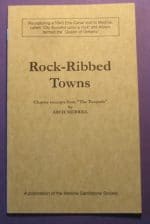On May 8, 2019 The Medina Sandstone Society sponsored a day long tour of distinguished sandstone acclaimed buildings in Buffalo. The sites chosen to tour had previously been inducted into the Sandstone Hall of Fame.
Forty participants from Medina, Albion, Lockport, Pavilion, Bergen, Wilson, Middleport and Batavia gathered at the Medina City Hall which houses the Sandstone Hall of Fame. Guests were greeted by Medina mayor Michael Sidari and Sandstone president, David Miller. President Miller traced the history of the formation of the Hall of Fame which originated in 2013 and recognizes outstanding sandstone architecture in the states of New York and Pennsylvania.
This tour focused on sandstone architecture in Buffalo and included site visits to the Hotel Henry, St. Louis Roman Catholic Church and St. Paul’s Episcopal Cathedral. The group disembarked for a narrated tour of the Hotel Henry located on the acclaimed Richardson Olmsted campus. Originally built in 1871 the complex was formerly the Buffalo State Asylum for the insane. The group gathered for lunch at the 100 Acres restaurant located in the Hotel Henry. The Richardson Olmsted historian, Corey Fabian Barrett remarked the name 100 acres was selected to acknowledge that for many years, patients of the asylum planted and harvested gardens as part of “enlightened treatment” therapy originally introduced by Dr. Thomas Story Kirkbride. Dr. Story Kirkbride strongly supported the belief that nature was an integral role in the rehabilitation of those suffering from mental illness. The restoration of the mixed use campus includes a boutique hotel, event and conference space, gardens, walkways and also houses the Lipsey Architecture Center/Buffalo.
After lunch, drive by highlights of other Sandstone Hall of Fame inductees including, the Lafayette Lofts, Buffalo Connecticut Street Armory, and First Presbyterian Church were pointed out by president Miller. The group disembarked and toured St. Louis Church where historian Michael Riester presented a narrative of the church and its significance to the early religious development of the community.
The group was then driven by Asbury Hall/Babeville and on to St. Paul’s Episcopal Cathedral. At Saint Paul’s, docent Del Milander spoke to the resilience of Medina sandstone after the cathedral was “nearly vanquished in a gas explosion and resulting fire”. While the interior was destroyed, the exterior walls of Medina sandstone remained solid.
The trip, designed as a first time venture outside of Orleans County, was well received and intended as a way to leisurely acquaint sandstone enthusiasts with remarkable treasures in the Buffalo region, and will be followed in the future with other related programs.











